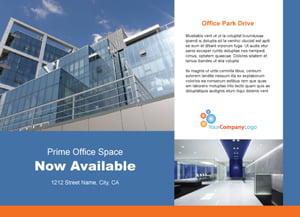Investors use the capitalization (cap) rate to compare different income-producing properties to make the best investment for their purposes. This rate is useful because it quickly shows the annual rate of return produced by the operations of an income property, stated as a percentage of invested capital.
To calculate a cap rate, an investor interested in buying an income-producing property takes the property’s annual net operating income (NOI) and divides it by the asking price. For example, a property’s NOI is $50,000 and the asking price is $1 million. In this case, the cap rate equals 5% ($50,000/$1,000,000).
For purchasers of real estate, the higher the cap rate, the better, as this translates to a lower purchase price and higher annual yield. Now, the investor needs to ask themselves: is 5% a good enough cap rate to consider purchasing the property?
The answer is relative. What makes an acceptable cap rate versus a bad cap rate depends on the property’s condition, the investor’s finances and the general economic outlook. But by zooming out, one can get an idea of what level of cap rates investors find acceptable from year to year.
In 2019, investors facing rising interest rates are less likely to accept low cap rates. That’s because interest rate movement is tied to cap rates. When rates rise and the cost of borrowing increases, the margin for profit shrinks as property prices are negatively impacted. This situation is in contrast with the past few years, when property prices have increased rapidly, making investors more concerned with the profits from an eventual resale than with the annual yields represented by the cap rate.
Therefore, as investors look ahead to leaner years for resale values, greater importance is placed on acceptably high cap rates.
When cap rates don’t match up with interest rates
A recent study from Quantum Real Estate Advisers shows cap rates aren’t always as neatly tied to interest rates as the casual observer might expect.
Since 2016, national commercial real estate (CRE) cap rates have remained roughly level, averaging between 4.5% and 5%. This is despite steady increases in the Federal Reserve (the Fed)’s benchmark interest rate, and a similar increase in mortgage rates.
Is this action normal?
Looking back at the most recent economic cycle, cap rates began to rise in expectation of the Fed increasing interest rates in 2004. Cap rates continued to rise alongside interest rates until peaking in 2006 at around 7%, nationally.
So why haven’t cap rates yet increased with interest rates during our current real estate cycle?
One reason may simply be that real estate prices did not begin to show signs of slowing until late in 2018, and cap rate reports are just now catching up. Another likely reason is low levels of construction, which have kept vacancy rates low over the past decade and demand for property high. In other words, lower annual returns have not been much of an issue when investors sense continued demand and the likelihood of a high profit at resale.
But this reliance on end-profit cannot continue in the coming years. Rising interest rates have pulled back buyer purchasing power, slowing momentum for property prices of all types. In California, home prices have decreased on a monthly basis since August 2018. Commercial prices will follow.
All of this means investors will be shifting their focus in 2019-2020, from short-term profit to long-term yields. The result will be demand for higher cap rates now and in the years ahead.














